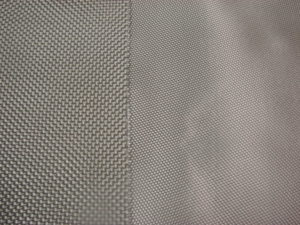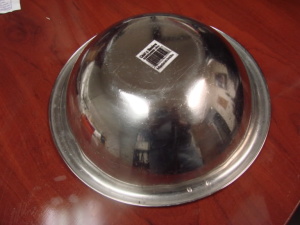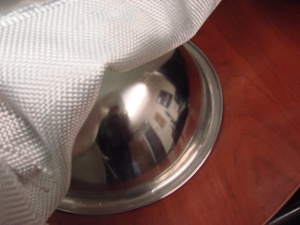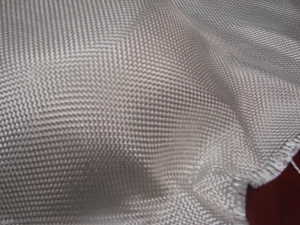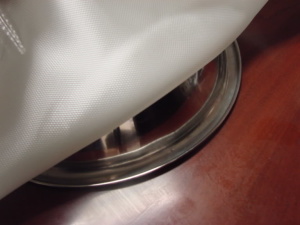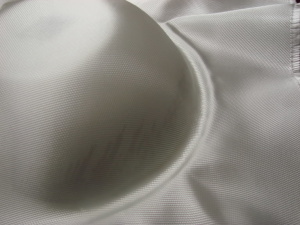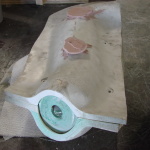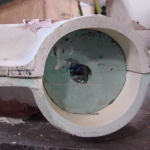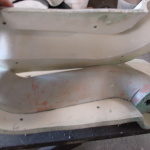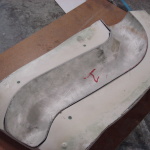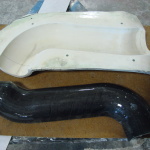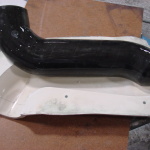Step One: Fabric Selection
Types of Fabric Weave Style and Surface Finishing for Resin Type Compatibility
Fabrics are generally considered ”balanced” if the breaking strength is within 15% warp to fill and are best in bias applications on lightweight structures. “Unbalanced” fabrics are excellent when a greater load is required one direction and a lesser load in the perpendicular direction.
| Tow | The bundle of individual carbon filaments used to weave carbon fabric. 50k tow means there are 48-50,000 carbon filaments in the tow. Smaller tow i.e. 12k, 6k, 3k and 1k are obtained by dividing the 50k tow into smaller bundles. |
| Thread Count | The number of threads (tow in carbon and yarn in Aramid) per inch. The first number will be the warp count and the second will be the fill count. Fill: The threads that run the width of the roll or bolt and perpendicular to the warp threads. |
| Warp | The threads that run the length of the roll or bolt and perpendicular to the fill threads. |
| Finish | The chemical treatment to fiberglass making it compatible with resin systems, therefore improving the bond between the fiber and the resin. Finishing fiberglass typically decreases the fiber strength by as much as 50%. Both Silane and Volanfinishes are epoxy compatible. Historically, Volan has been considered a softer finish for a more pliable fabric, but recent advances have yielded some excellent soft Silanefinishes. |
| Thickness | Measured in fractions of an inch. The thicker the fabric the more resin required to fill the weave to obtain a smooth finished part. |
Weaves
Commercial Fiberglass-Fabric Weaver
Finishing Cross Reference & Resin Type Compatibility
| RESIN COMPATIBILITY | Burlington Industries | Clark Schwebel | J.P Stevens | Uniglass Industries |
| Epoxy, Polyester | VOLAN A | VOLAN A | VOLAN A | VOLAN A |
| Epoxy, Polyester | I-550 | CS-550 | S-550 | UM-550 |
| Phenolic, Melamine | I-588 | A1100 | A1100 | A1100 |
| Epoxy, Polyimide | I-589 | Z6040 | S-920 | UM-675 |
| Epoxy | I-399 | CS-272A | S-935 | UM-702 |
| Epoxy | CS-307 | UM-718 | ||
| Epoxy | CS-344 | UM-724 | ||
| Silicone | 112 | 112 | n-pH (neutral pH) |
Satin Weave Style For Contoured Parts Fabricating
These styles of fabrics are one of the easiest fabrics to use and it is ideal for laying up cowls, fuselages, ducts and other contoured surfaces with minimal distortions.
The fabric is pliable and can comply with complex contours and spherical shapes. Because of its tight weave style,
satin weaves are typically used as the surface ply for heavier and coarser weaves.
This technique helps reduce fabric print through and requires less gel coat to create a smoother surface.
Satin Weave Type Conformity Unto Curved Shapes
- Plain & Satin Weave Fiberglass 16oz/Yard sq
- Sample Curved Tooling
- Plain Weave Fabric Overlay
- Notice Uneven Layup and Poor Shape Conformity
- Satin Weave Fabric Overlay
- Note Smooth Conformity
Plain Weave Style for High Strength
Plain Weaves, Bi-axial, Unidirectional Styles For Directional High Strength Parts
Use this weave style cloth when high strength parts are desired.
It is ideal for reinforcement, mold making, aircraft and auto parts tooling, marine and other composite lightweight applications.
- Clamshell Mold
- Clamshell Mold
- Silicone Master Tool
- 2 Plies Fiberglass 1 ply Carbon Fiber
- 2 Plies Fiberglass 1 Ply Carbon Fiber Reproduction
- 2 Plies Fiberglass 1 Ply Carbon Fiber Reproduction
<<< Return to Composite Fabricating Basics Overview
>>>Continue to Composite Fabricating Basics Step 2: Choosing the Best Epoxy Resin System




